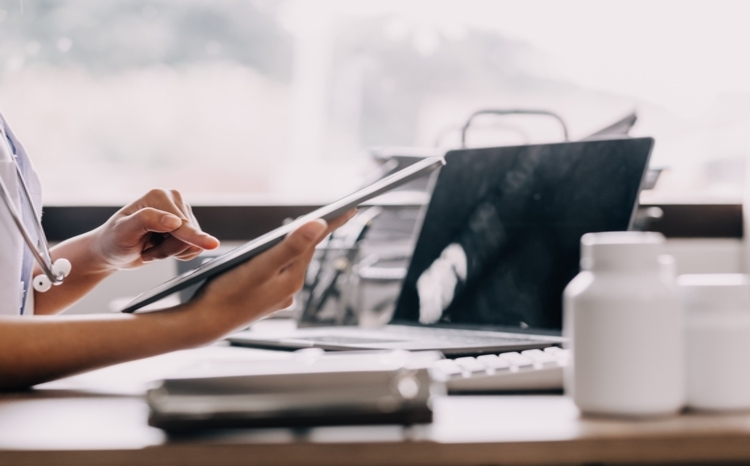GP2GP goes live
- 13 September 2005

Demonstrating more than a dash of bravery, the team that has developed the GP2GP record transfer system provided a live demo to an expert audience of GPs and health informatics professionals at the British Computer Society’s Primary Health Care Specialist Group Conference in Cambridge last Friday.
Though it has a long history the current GP2GP record transfer project is being delivered by the same NHS Connecting for Health team that implemented the Quality and Management and Analysis System (QMAS).
The system successfully demonstrated in Cambridge is so far working well for transfers between EMIS practices, and between EMIS LV to InPractice Systems’ Vision. Attachments are now being copied across as part of the record transfer; however, information on allergies is not as yet.
Explaining the benefit of GP2GP record transfers, NHS Connecting for Health project manager Chris Leary said: "Current process requires an electronic record to be manually summarised and then re-keyed into a different system, this can introduce errors and takes time. It also means that a new practice doesn’t know much about a patient."
How it works
When a patient registers with a new practice the new practice sends a request to the spine for the new patient’s record. This then identifies the old practice they were registered with and fires a request for their GP record which sits on the spine. The old practice then sends an acknowledgement back and then sends the record electronically.
Having received the record the new practice must review it and accept it before incorporating it into their electronic patient record system. As part of this process a patient’s new GP has to review and decide whether to re-activate any medications being prescribed.
Software to enable GP2GP record transfers is set to go live in practices in three pilot PCTs, to enable field testing of the systems to confirm its safety and refine usability ahead of a national roll-out.
|
"It’s very different to either Choose and Book or ETP. We will be looking very carefully at how practice systems interact with the spine" — Chris Leary, GP2GP project manager, Connecting for Health
|
Leary said: "We’re planning on putting it into early adopters, starting with 23 practices." So far NHS CfH has only given its authorisation to deploy for EMIS-to-EMIS record transfers.
"GP2GP record transfers are quite different in the way it moves across the spine – it’s very different to either Choose and Book or ETP. We will be looking very carefully at how practice systems interact with the spine," explained Leary.
In GP2GP record transfers the spine acts purely as a "’store and forward’ mechanism, where once a record is picked up by a new practice it completely disappears from the spine," he explained.
Manual checks
Dr John Williams, one of the leading clinicians on the development team, added that all the benefits of the system are provided to patients and the new practice receiving the record. "It should lead to an enormous reduction in administration time, with paper records now not having to be re-keyed in."
However, he stressed that there would still be a need for practices to manually check the accuracy and completeness of each record copied over. "Practices will still need to verify the record by identifying both the patient and record. Just because it is electronic and automatic does not mean it will always be right."
It will still be imperative that all records are manually checked, as "Not all information necessarily moves across," explained Dr Williams. "There are all sorts of technical and semantic issues around attachments." Where record structures cannot be faithfully transferred the default position is to turn data into "human-readable text".
This will mean that practices will still have to determine whether the record is fit for purpose and should be incorporated into the new practices record system. Dr Williams stressed that a practice will still also get the paper record from the originating practice.
He added that even with the new record transfer system in place. "It will be a while before the record is actually available on the day a patent registers with the new practice."
Testing for safety
Dr Williams said that testing at this stage focused on clinical assurance, and ensuring that a faithful complete copy of the patient record is electronically transferred. "The testing we are doing is focusing on safety rather than usability… We need to make sure that attachments don’t get lost or records truncated."
He explained that the team had done a lot of testing with both artificial records and real patient records, having first got consent from individual patients.
Describing the state of the GP2GP record transfer system, Dr Williams said: "This system is not perfect, it is not necessarily fantastically usable. But our aim is to get something out into trials and get users to provide feedback."
One particular problem that is already known to exist, which will have to be resolved, is where a patient transfers from practice A to practice B and then back to A again. At the moment the advice being given to practices is that they will have to reactivate the original record.
Related articles
Comment & Analysis: Waiting to connect




